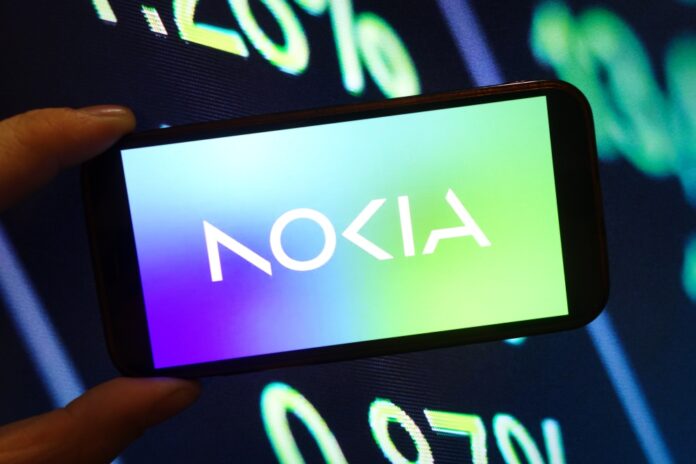US-born Justin Hotard, who became CEO of the Finnish vendor on 1 April, is having a baptism of fire but confirmed expectations of meeting guidance for the year
Nokia’s reporting of its Q1 trading figures showed its operating profit fell to €156 million compared with €600 million for the same period in 2024. On average, analysts had predicted profits of €244 million for the quarter.
The company said the reasons for the fall were lower net sales at Nokia Technologies and a one-off charge of €120 million in its Networking division. Nokia Technologies gains most of its income from licensing intellectual property, and develops and sells consumer products under the Nokia brand.
Also, Nokia’s sales totalled €4.39 billion in Q1, down 3% compared to the previous year, on a constant-currency basis. Analysts had expected sales of €4.41 billion.
Impact of tariffs
Justin Hotard, who became CEO of Nokia on 1 April, replacing Pekka Lundmark, predicted that the Trump Administration’s increased import tariffs could reduce the company’s operating profits by between €20 million and €30 million in Q2. He also warned that achieving the top end of the company’s 2025 guidance would be difficult: Nokia had forecast its operating profits for the current year to be between €1.9 billion to €2.4 billion.
The new CEO said he would consider increasing Nokia’s US-based manufacturing base to offset the tariffs, pointing out that about 90% of US communications infrastructure uses its technology. Currently the Finnish firm has five manufacturing plants in the US, three in California which are two semiconductor factories and chip maker.
T-Mobile boost for Nokia
Nokia’s US sales have been growing steadily, despite the setback of losing out on a massive AT&T tender to Ericsson at the end of 2023. Today it announced a “multi-year extension” to its contract with T-Mobile US to expand the operator’s nationwide 5G network and capacity. The extension covers hardware, software, maintenance and support services.
T-Mobile will deploy Nokia’s baseband and radio technologies from its AirScale RAN range, and the vendor’s Habrok Massive MIMO and Levante Ultra-Performance baseband solutions, which run on Nokia’s its ReefShark System-on-Chip technology, plus the MantaRay self-organising network (SON) and AutoPilot, another SON solution for network optimisation and automation.
Perhaps most interesting in the context of tariffs, Nokia will continue to support T-Mobile’s AI-RAN work, including their technology partnership at T-Mobile’s AI-RAN Innovation Center launched last year.
Ulf Ewaldsson, President of Technology at T-Mobile, commented, “T-Mobile’s nationwide standalone 5G network has solidified our global leadership by delivering tangible benefits to our customers. This new agreement with Nokia will further enhance our current network capabilities as we strengthen our journey supercharged with 5G Advanced, laying a robust foundation for future innovation.”
Support of the FCC?
Trump appointee Brendan Carr is the new head of the Federal Communications Commission, the US’ telecom regulator. Earlier this month, in an interview with the Financial Times [subscription needed] Carr said that Nokia and its Swedish rival Ericsson should both increase their manufacturing output in the US. The FT quoted Carr saying he would “look at” faster regulatory clearances for new technology from the two if they moved to the US.
Hotard was quoted by Reuters saying, “It is not a discussion on [moving] our headquarters … that is less critical than it is in terms of investment in research and development (R&D) and manufacturing capability.” .



